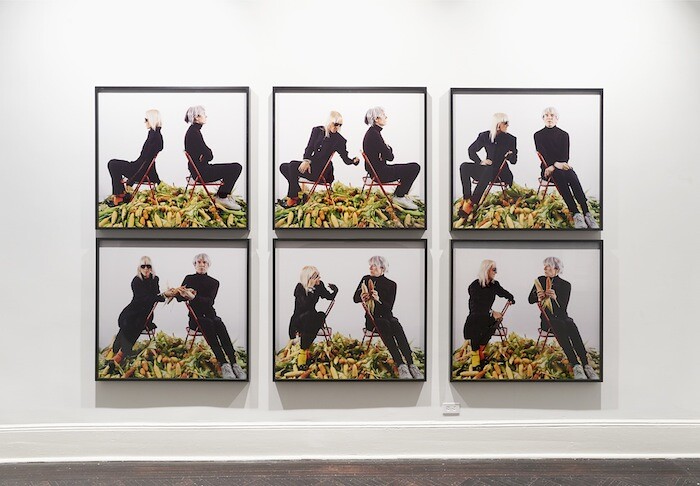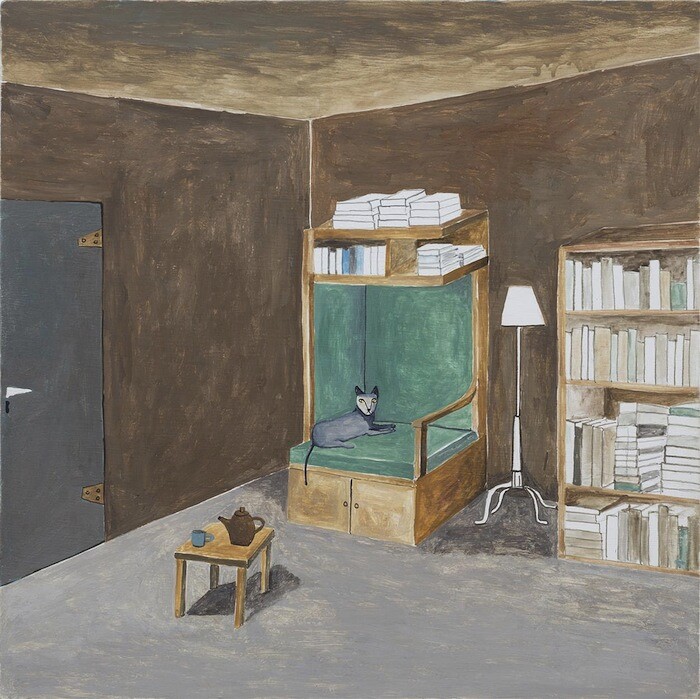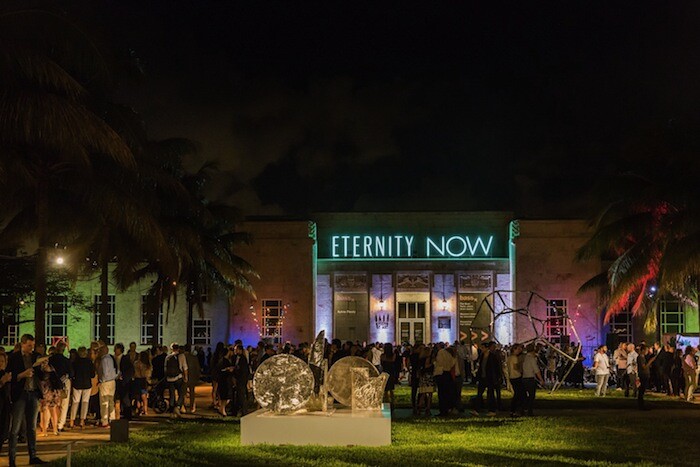As is appropriate for its place in the calendar, Art Basel Miami Beach is a fair of reaffirmations and revisitations rather than new discoveries. Its great achievement has been, over its 14 years, to stimulate the artistic life of the city in which it takes place. More broadly, there are conflicting opinions about the role that Miami plays, or should play, in relation to Central and South America. Its cultural institutions, most notable of which are the Pérez Art Museum Miami, the Institute of Contemporary Art, the Cisneros Fontanals Art Foundation, the Bass Museum of Art, and the upcoming Faena Forum, hint at the city’s emerging position as a cultural hub for the region—at least in terms of infrastructure. It remains to be seen how they develop in terms of programming and integration at the local level.
Within the context of the fair, among the works to reflect on these North-South alliances, positions, and relations is Marta Manujín’s Paying off the Argentine Foreign Debt with Corn, “the Latin American Gold” (1985-2011), exhibited at Henrique Faria Fine Art, New York. The first image of a series of six in this allegorical photo performance piece shows Pop icons Andy Warhol and Minujín sitting on a heap of 1000 golden painted corncobs with their backs to each other. In the final image, at the end of their negotiations, Warhol holds in his hand two ears of “Latin American Gold” as payment for Argentina’s foreign debt. Also in dialogue with symbolic objects, which are dismantled as an artistic strategy, is Fritzia Irízar’s work Untitled (the disappearance of the symbol) (2015). Presented at Positions (the sector of the fair devoted to solo presentations by emerging talent) by Mexico City’s Arredondo \ Arozarena, the installation shows a knitting machine unraveling the stitches of a life-sized Phrygian cap embroidered in gold, until the object disappears. The act suggests that the absence of the object is the most radical and authentic representation of the freedom that it symbolizes.
One of the most affirming sections of the fair is Kabinett, in which galleries present a curated exhibition by an artist of their choice in a separately delineated space within their booths. New York’s Two Palms Gallery exhibits Chris Ofili’s delicately erotic series “Black Shunga” (2007). The small etchings on a metallic surface make it hard to immediately decipher the image, a difficulty exacerbated by restricted access to the piece. Mexico City’s kurimanzutto presents a series of statuettes that resemble ancestral totems by Dr Lakra who, well known for his work as a tattoo artist, also applies his skills as a draughtsman to decorate found objects. These works, however, were exhibited more cogently in a recent exhibition at the gallery. Bogota’s Casas Riegner uses the platform to revisit the poetics of one of the fathers of Colombian conceptualism, Adolfo Bernal, whose billboards (Carteles de la serie obra impresa/urbana, 1979-1987) played on the relationship that can be established with the spectator outside of the gallery space.
Galleries’ decisions about which artists to present at fairs are, of course, determined by a number of circumstantial elements that might contribute to increased visibility and sales: contextual relevance to the fair’s location, for example. The presence of so many Cuban artists at Art Basel Miami Beach, then, might be attributed to the recent renormalization of relations between Cuba and the United States. Some of the highlights of the fair are the protuberant pieces of Zilia Sánchez presented by Galerie Lelong, New York, whose unfairly neglected work has until now been seen relatively little outside Puerto Rico. Running in parallel is “Tramas,” an exhaustive exhibition dedicated to Gustavo Pérez Monzón at the Cisneros Fontanals Art Foundation, one of the major figures of Cuban art in the eighties.
The galleries in the Survey and Nova sectors—dedicated to art historical projects and unusual presentations of new work, respectively—tend to focus on curatorial actions within the context of the fair, an approach encouraged by the spatial limitations of the booths. This is typical of Oslo’s Standard gallery, showing in the main section, whose minimalist fair presentations have become something of a signature. As ever, their stand—which features the work of Danish artist Nina Beier—is a model of restraint and exhibition design, notable for the highly complementary dialogue achieved through the selection of works and their display. It is always a stand-out.
At Survey, New York’s Cristin Tierney presents a unique installation by Peter Campus, which includes the iconic video work Three Transitions (1973), in which Campus tackles questions regarding the representation and identity of the image and its relation to technology. As well as being the first time that this group of pieces from 1971 to 1976 has been exhibited together, the installation itself is highly distinctive. Campus uses monitors from different eras and technologies, contrasting the temporality and experimentation of these images’ construction with the medium that reproduces them. Valencia’s Espaivisor Gallery introduces us to the early photographic work of Miguel Ángel Rojas: three furtive photographic series dating from the 1970s and 1980s (“Faenza,” “Mogador,” and “Sobre Porcelana”) that were shot inside the Imperio and Faenza cinemas of Bogotá, documenting homosexual encounters in an intolerant era. This series marks not only a precedent in the treatment of homosexuality in Colombian visual arts, but also an early sign of the recurring poetics of the later work of Rojas.
Many galleries in the Nova sector have opted for presentations that relate the work of two or three artists, creating dialogues through association or contrast, as is the case with the Parisian gallery Mor Charpentier. It weaves together micro-stories of exploitation through the work of Carlos Motta, Teresa Margolles, and Rosella Biscotti, with pieces that operate as pivot points within their own narrative. Mother’s Tankstation, Dublin, adopts a more lyrical approach, establishing a very fluid relationship between the pictorial narratives of Noel McKenna and the figurines of Sam Anderson.
And if, in the end, many of the works at the fair will end up in a museum, why not bring the museum to the fair? Presented at São Paulo’s Leme is the fictional museum LiMac, launched in 2002 in the city of Lima by the artist Sandra Gamarra. In an exhibition entitled “Soft Modernity,” artists Luciano Figueiredo, Mauro Piva, and Gamarra herself recreate pieces that allude directly to neo-concretism, abstractionism, and Latin American modernism. Within the premises of this fiction, the project operates as a museum with a souvenir shop, exhibition hall, and collection. Thus the fiction of LiMac is proposed as an alternative strategy to the institutional crisis that is affecting so many public spaces.
This year’s edition of Art Basel Miami Beach has seen a slight increase in its focus on Latin American galleries and artists. If Miami is to put itself forward as the cultural capital of the Americas, however, we need to see the balance continue to shift in the coming years.











